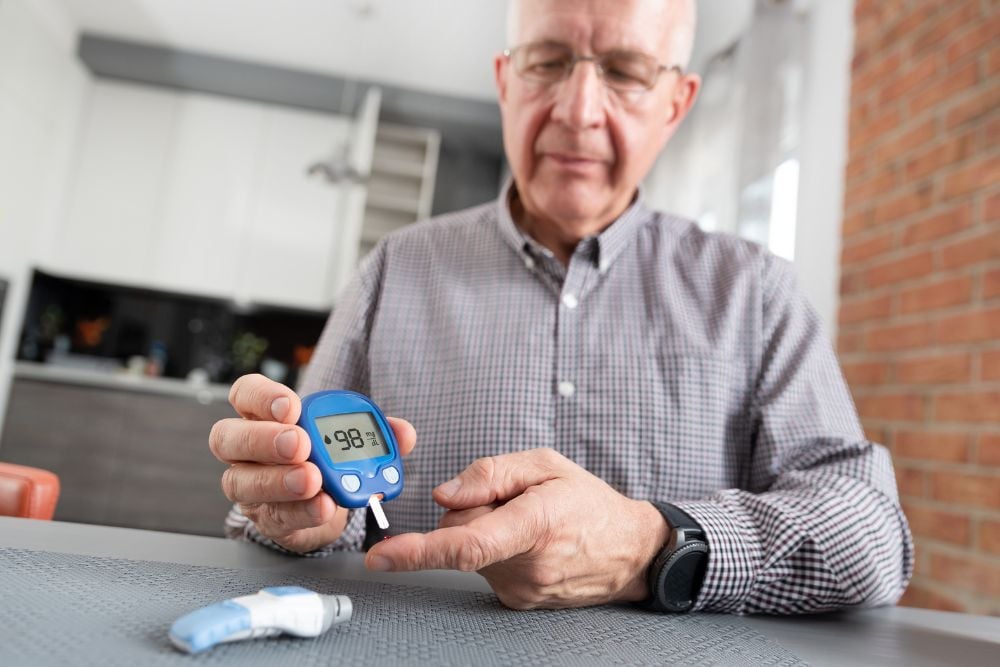Beyond Retinopathy: Other Ways Diabetes Can Impact Your Eyes

Diabetes can affect various parts of the body, including the eyes. Over time, high blood sugar levels can damage the retina, the part of the eye responsible for detecting light and sending signals to the brain through the optic nerve. This condition is known as diabetic retinopathy. Additionally, people with diabetes are at a higher risk for other eye conditions, such as glaucoma and cataracts, which can lead to further vision problems. If you have diabetes, it's important to recognize the signs and symptoms of diabetic retinal disease and to take proactive steps to protect your eyesight.
Diabetes and the Eyes
In the short term, individuals with high blood glucose levels are unlikely to experience vision loss. However, they may temporarily have blurry vision when adjusting their diabetes care plan or medication. If blood glucose levels remain high over an extended period, they can damage the tiny blood vessels in the back of the eyes. This damage can lead to leaking fluid and swelling. Additionally, new, weak blood vessels may form and bleed into the eye, resulting in scarring or increased pressure inside the eye.
Along with diabetic retinopathy, other eye diseases that can threaten vision include:
Diabetic Macular Edema
The macula is the part of the retina responsible for processing what you see directly in front of you. It's essential for activities such as reading, driving, and recognizing faces. Diabetes can lead to swelling in the macula, a condition known as diabetic macular edema. Over time, this condition may result in partial vision loss or even blindness.
Glaucoma
Glaucoma refers to a group of eye diseases that can damage the optic nerve. Individuals with diabetes have an increased risk of developing glaucoma. If left untreated, glaucoma can result in vision loss and blindness. The symptoms of glaucoma vary depending on the specific type of the disease.
Cataracts
As we age, the lenses of our eyes can become cloudy. People with diabetes are at a higher risk of developing cloudy lenses, a condition known as cataracts. Those with diabetes may experience cataracts at an earlier age compared to individuals without the condition, as elevated glucose levels can lead to deposits forming in the eyes.
Signs and Symptoms You Shouldn’t Ignore
In many cases, the early symptoms of diabetic eye disease are hard to notice. However, when symptoms do appear, they may include:
- Blurred vision
- Frequently changing vision
- Difficulty seeing colors
- Vision loss
- Flashes and floaters
If you experience sudden changes in your vision or if it seems like a curtain is being pulled over your eyes, you should see a retina specialist as soon as possible. These symptoms could indicate a detached retina, which is considered a medical emergency.
Protecting Your Vision
To help prevent diabetic eye disease and protect your vision, it’s crucial to manage your A1c, blood pressure, and cholesterol levels properly. If you smoke, quitting is also essential. Furthermore, it's important to have a dilated eye exam at least once a year. The earlier a diabetic eye condition is diagnosed and treated, the better the outcomes for your vision.
Learn More About Diabetic Eye Disease
Diabetic eye conditions, including diabetic macular edema, cataracts, and glaucoma, in addition to diabetic retinopathy, can lead to permanent vision loss if left untreated. At Southeastern Retina Associates, we use advanced retinal treatments to help patients with diabetes preserve their vision. If you want to learn more about diabetic eye disease or are experiencing any concerning symptoms, please see your regular eye doctor as soon as possible, and they may refer you to one of (link: finder#location text: our offices. We see patients in Chattanooga, Knoxville, the Tri-Cities, and more.
